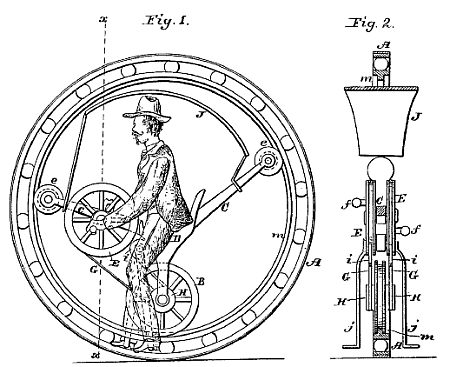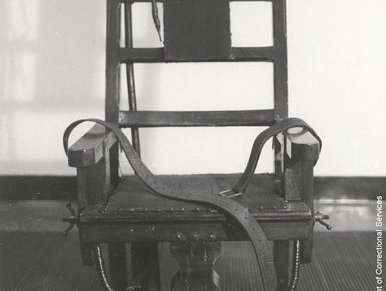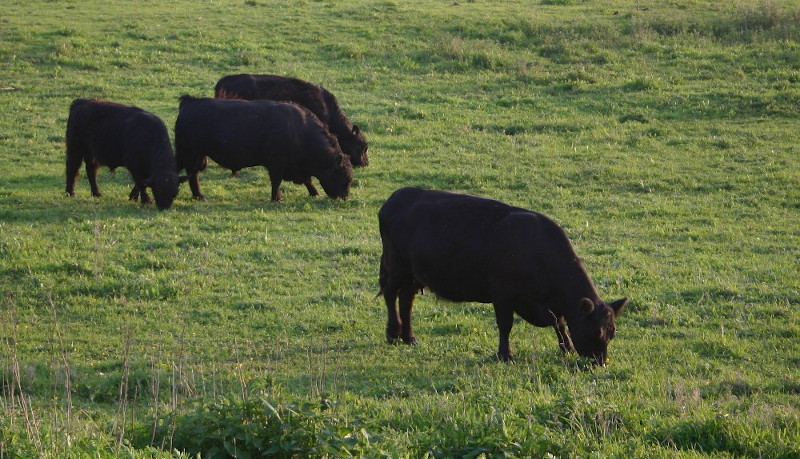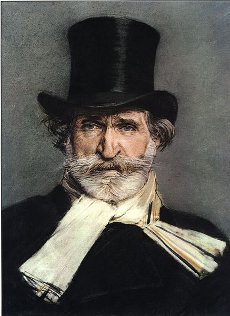sgiomlaireachd
n. (Scottish Gaelic) the habit of dropping in at mealtimes
Heir Apparel
A rector of a Yorkshire parish, who died in 1804, left a considerable property to his daughter on the condition that she should dress with greater propriety than theretofore. ‘Seeing that my daughter, Anna, has not availed herself of my advice touching the objectionable practice of going about with her arms bare up to the elbows, my will is that should she continue after my death in this violation of the modesty of her sex, all the property, personal and real, devised for her maintenance, shall pass to the oldest of the sons of my sister, Caroline. Should anyone take exception to this, my wish, as being too severe, I answer that licence in dress in a woman is a mark of a depraved mind.’
— Virgil McClure Harris, “Wills and Will-Makers,” in Trust Companies, December 1921
Murder Ink
In 1973, Sheldon Klein of the University of Wisconsin programmed a computer to write a 2,100-word mystery story in 19 seconds:
Wonderful smart Lady Buxley was rich. Ugly oversexed Lady Buxley was single. John was Lady Buxley’s nephew. Impoverished irritable John was evil. Handsome oversexed John Buxley was single. John hated Edward. John Buxley hated Dr. Bartholomew Hume. Brilliant Hume was evil. Hume was oversexed. Handsome Dr. Bartholomew was single. Kind easygoing Edward was rich. Oversexed Lord Edward was ugly. Lord Edward was married to Lady Jane. Edward Liked Mary Jane. Edward was not jealous. Lord Edward disliked John. Pretty jealous Jane liked Lord Edward. …
The plots tend to be haphazard and the narrative unsophisticated … but in this example the butler did it. Perhaps Klein was onto something.
Round Trip

Connecticut inventor Richard Hemmings patented this “improvement in velocipede” in 1869. If I understand his description aright, the feet aren’t used at all: The operator sits in a saddle and turns a hand crank, which drives the inner wheels and imparts motion to the surrounding “traction wheel.”
“In starting the velocipede, the first movement is given by the operator’s running or walking a short distance on the ground while astrike the saddle,” Hemmings writes, worryingly. “When a start is thus obtained, the motion is readily continued by turning the pulleys E with the hands.”
“When the weight is below the centre, and the feet near the ground, and always free, very little difficulty is experienced in balancing and guiding the machine; and, as numerous experiments have proved, the ease with which it is worked and the velocity obtained render it quite equal, if not superior to any velocipede in use, while the expense of constructing them is far less.”
He says nothing about steering.
“The Chair of Death”

Convicted of murder in Illinois in 1934, Walter Dittman composed a poem to serve as his last words:
I see it grimly waiting patiently for me,
To send me as its victim into eternity.
Not a whit or bit of mercy does it show for man or beast.
Its only song is, “Die, you dog, for your slide to hell is greased.”
It’s not the thought that I’m to die that makes me want to pray.
It’s because I’ll not be there, my own, to wipe your tears away.
God knows, and so do you, that I never slew nor stole,
And though the whole world’s turned against me,
He’ll have mercy on my soul.
Picture This

We must assemble a jigsaw puzzle that contains 100 pieces. If a “move” consists of connecting two sections (even a section containing a single piece), what’s the minimum number of moves we must make to complete the puzzle?
Beef Tack

In 2008, five European scientists announced that cattle and deer around the world align their bodies in roughly a north-south direction when grazing or resting.
German zoologist Sabine Begall studied thousands of Google Earth images and discovered that both types of animals appear to align their bodies with magnetic north. The conclusion “appears to be quite clear-cut from the data,” observed ornithologist Wolfgang Wiltschko.
“It boggles the mind that no one — herdsman, rancher, or hunter — had noticed this before,” writes ethologist Jonathan Balcombe. “What else are we failing to notice?”
(Sabine Begall et al., “Magnetic Alignment in Grazing and Resting Cattle and Deer,” Proceedings of the National Academy of Sciences 105:36 [Sept. 9, 2008], 13451-13455.)
07/13/2021 UPDATE: Dogs prefer to face north or south while defecating. (Thanks, Tucker.)
Math Notes

“Regina v. Ojibway”
This is an appeal by the Crown by way of a stated case from a decision of the magistrate acquitting the accused of a charge under the Small Birds Act, R.S.O., 1960, c.724, s.2. The facts are not in dispute. Fred Ojibway, an Indian, was riding his pony through Queen’s Park on January 2, 1965. Being impoverished, and having been forced to pledge his saddle, he substituted a downy pillow in lieu of the said saddle. On this particular day the accused’s misfortune was further heightened by the circumstance of his pony breaking its foreleg. In accord with Indian custom, the accused then shot the pony to relieve it of its awkwardness. The accused was then charged with having breached the Small Birds Act, s.2 of which states:
2. Anyone maiming, injuring or killing small birds is guilty of an offence and subject to a fine not in excess of two hundred dollars.
The learned magistrate acquitted the accused holding, in fact, that he had killed his horse and not a small bird. With respect, I cannot agree.
In light of the definition section my course is quite clear. Section 1 defines “bird” as “a two-legged animal covered with feathers.” There can be no doubt that this case is covered by this section.
Counsel for the accused made several ingenious arguments to which, in fairness, I must address myself. He submitted that the evidence of the expert clearly concluded that the animal in question was a pony and not a bird, but this is not the issue. We are not interested in whether the animal in question is a bird or not in fact, but whether it is one in law. Statutory interpretation has forced many a horse to eat birdseed for the rest of its life.
Counsel also contended that the neighing noise emitted by the animal could not possibly be produced by a bird. With respect, the sounds emitted by an animal are irrelevant to its nature, for a bird is no less a bird because it is silent.
Counsel for the accused also argued that since there was evidence to show accused had ridden the animal, this pointed to the fact that it could not be a bird but was actually a pony. Obviously, this avoids the issue. The issue is not whether the animal was ridden or not, but whether it was shot or not, for to ride a pony or a bird is of no offence at all. I believe counsel now sees his mistake.
Counsel contends that the iron shoes found on the animal decisively disqualify it from being a bird. I must inform counsel, however, that how an animal dresses is of no consequence to this court.
Counsel relied on the decision in Re Chicadee, where he contends that in similar circumstances the accused was acquitted. However, this is a horse of a different colour. A close reading of that case indicates that the animal in question there was not a small bird, but, in fact, a midget of a much larger species. Therefore, that case is inapplicable to our facts.
Counsel finally submits that the word “small” in the title Small Birds Act refers not to “Birds” but to “Act”, making it The Small Act relating to Birds. With respect, counsel did not do his homework very well, for the Large Birds Act, R.S.O. 1960, c. 725 is just as small. If pressed, I need only refer to the Small Loans Act, R.S.O. 1960, c. 727, which is twice as large as the Large Birds Act.
It remains then to state my reason for judgment, which, simply, is as follows: Different things may take on the same meaning for different purposes. For the purpose of the Small Birds Act, all two-legged, feather-covered animals are birds. This, of course, does not imply that only two-legged animals qualify, for the legislative intent is to make two legs merely the minimum requirement. The statute therefore contemplated multi-legged animals with feathers as well. Counsel submits that having regard to the purpose of the statute only small animals “naturally covered” with feathers could have been contemplated. However, had this been the intention of the legislature, I am certain that the phrase “naturally covered” would have been expressly inserted just as “Long” was inserted in the Longshoreman’s Act.
Therefore, a horse with feathers on its back must be deemed for the purposes of this Act to be a bird, and a fortiori, a pony with feathers on its back is a small bird.
Counsel posed the following rhetorical question: If the pillow had been removed prior to the shooting, would the animal still be a bird? To this let me answer rhetorically: Is a bird any less of a bird without its feathers?
— Anonymous, collected in Amicus Humoriae, ed. Robert M. Jarvis, Thomas E. Baker, and Andrew J. McClurg, 2003
Late Acceptance

In 1832, at age 19, Giuseppe Verdi applied to study at the Milan Conservatory and was rejected.
In 1898, at the end of his career, he learned that the conservatory had decided to rename itself the Giuseppe Verdi Conservatorium.
“My God, this was all that was lacking to plague the soul of a poor devil like me who desires only to be serene and to die serenely!” he wrote to his publisher. “No, sir! Even this isn’t allowed me! What wrong have I done that I should be tormented like this?”
That’s not quite fair. He had been four years over the age limit and a foreigner to the state of Lombardy-Venetia, where the school was located. But he remembered it as “a Conservatorium that (I do not exaggerate) tried to kill me, and whose memory I should try to escape.”
